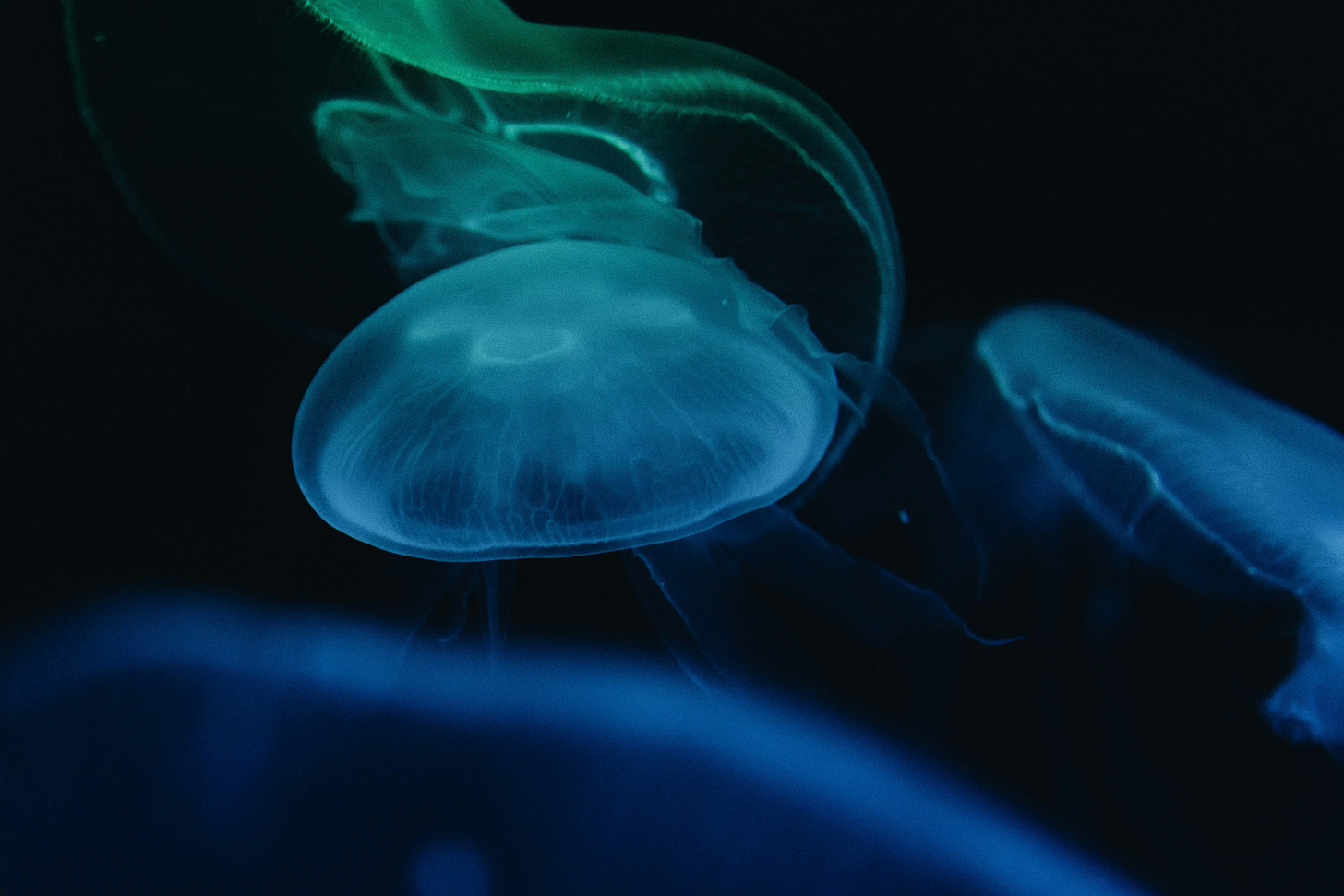Who Do You Swim With?
An informal conversation about quicksands and ocean creatures.

Imagine yourself enjoying a warm, sunny beach, gathering smooth pebbles and tossing them into the ocean with various techniques. You bask in the light, asking your internal voice whether to wade in for a deliberate cold swim once you’ve ensured the water is safe (read:) free of jellyfish.
As you walk barefoot on the golden sand, you feel gentle exfoliation. The uneven surface stimulates your feet’s pressure points, enhancing circulation and encouraging relaxation. If you don’t like sunbathing, know that the sand also absorbs sunlight, which provides a natural opportunity for you to absorb vitamin D without a risk of a potential sunburn. So, you might not be a person needing to relieve joint and muscle pain, which many of us accumulate from living in a maritime climate with its drizzle and dampness, especially in autumn and winter, but just to finish off on the therapeutic benefits digression, I assure you that I am not making you holiday sick by this introduction to the more profound ocean.
Here, you feel warmth down to your core, a reminder of what sunlight and a moment to reflect can do for both body and soul.
Yes, imagine yourself there—unless, of course, you’re sunbathing on a beach right now, which is unlikely; otherwise, you’d likely be engrossed in a printed book rather than glancing at your phone. Perhaps Gone with the Wind if you’re a romantic, or for the more practical soul, Truth or Busted: Survival Skills.
The Truth about Quicksand
While you relax, you’re still mindful of your steps, wary of sinking into quicksand in ten seconds flat, as in the movies where those foolish enough to wander into quicksand are instantly swallowed up. Yikes!
But here’s the truth: quicksand is simply a mix of sand and clay that’s so waterlogged, it loses the firmness needed to support a person’s weight. People who’ve encountered quicksand describe it as standing on jelly—the surrounding area even wobbles when you move. However, quicksand won’t suck you right under. If you find yourself sinking, struggling only makes it worse. Instead, move your legs gently to create a gap between them, allowing water to flow downward and loosen the sand. Though it takes time, you can free yourself without needing someone to pull you out with a dramatic SLURP like in the movies.
So before you decide if the ocean is safe to get beyond the calf level, think of it: we’re surrounded by others, each radiating their light or, at times, casting shadows that can seep in. Don’t worry; I won’t go in-depth into The Red Book, Jung’s crowning achievement — the most important book of his life (which consists thirdly of The Black Book) — may be too formal (though enlightening!) for the occasion.
Instead, if you were to decide to venture into the ocean, consider its two creatures: the bioluminescent comb jelly and the box jellyfish. Both belong to the sea, yet they embody starkly different energies. One radiates harmless, beautiful light so bright you could probably consult your book by their light, the other conceals deadly venom.
The Bioluminescent Companions
The comb jelly, a gentle creature that glows with blue-green and pink hues, symbolises those who carry light within. These are people who uplift, inspire, and guide, illuminating our path without trying to control it. Their presence radiates warmth and beauty, offering a safe space to be vulnerable and authentic.
These people are often underestimated, and seen as fragile or unassuming. Yet, their strength is in their light—a subtle strength that resembles a gentle glow in the darkest waters. They serve as beacons, like lighthouses guiding sailors home. They’re the friends, mentors, and confidants who encourage us to look within, helping us find the spark that fuels our own light.
Jung often described the journey to self-discovery as a descent into darkness, where we eventually meet our own light. Swimming with these bioluminescent souls teaches us to recognise our own brightness. In their light, we see a reflection of our potential.
The Box Jellyfish
In contrast, the box jellyfish, or Chironex flickeri, glides through the ocean with deadly potency hidden in its nearly invisible form. It represents those whose influence stings, whose words or actions inject doubt, insecurity, or despair.
People resembling the box jellyfish often carry hidden toxicity. They may appear inviting, yet their influence can be harmful, even fatal to our growth. They camouflage their intentions, appearing supportive, but lurking beneath are criticisms, manipulations, and words that sting with insincerity.
If we linger too close, we risk entanglement in negativity that can drain our peace and dim our light. These relationships teach us discernment; the ocean warns us to respect boundaries with other creatures.
Choosing Your Companions
Jung believed each person holds both light and shadow within. Choosing who we swim with reflects our values and understanding of balance. We learn to ask: Who enhances my journey? Who allows me to grow and explore? And, crucially, where do I shine my own light—or, conversely, where do I risk being a source of darkness?
Consider what kind of presence you want to be in others’ lives. Do you offer light, encouragement, and understanding? Or do you sometimes, unknowingly, sting those around you with words or actions that hurt? Swimming with bioluminescent companions can teach us to be more mindful of our impact, helping us choose light over darkness.
In the end, if life is a shared ocean, vast and filled with possibilities, we can choose to swim closely with those who help us grow and who inspire us to be our best. And even when we encounter harmful influences, we can learn from them, knowing that no one’s darkness has to define us.
So, who do you swim with? Choose carefully. Seek out those who radiate light, who help you shine brighter, and who guide you safely through life’s currents. At the same time, stay wary of the toxic energies lurking beneath calm waters, and don’t let them dim your light. Every choice shapes not only your journey but also the light you bring to the world. In Jung’s words, “I am not what happened to me, I am what I choose to become.” Choose to be light.
Swim with bioluminescent comb jellies, gentle creatures that, despite their jelly-like appearance, have no sting. Their beautiful blue-green hues with pink sparkles glow in the dark so brightly you could probably read Truth or Busted: Survival Skills by their light.
But keep the box jellyfish at a distance. Its sting is deadly to humans. Known scientifically as Chironex flickeri, it’s umbrella-shaped, swims at 10 centimeters per second, and has 24 eyes. Its tentacles, up to 3 meters long, are covered with tiny harpoons that inject venom into its victims. Make sure you’re not one of them.
Now, back from the box of imagination to the cold oceans topic — it’s not vacation time for most of us! If you get a chance to get to the seaside any time soon — you can always run alongside the coastline with your dog…



